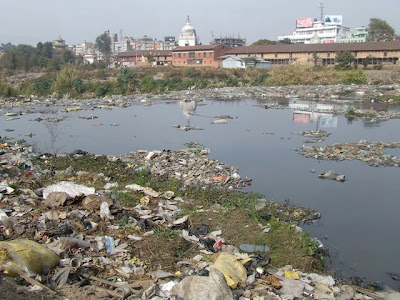I like to classify dyes as either natural or synthetic dyes. Compounds extracted from plants (or other naturally occurring sources) can be called natural dyes. Synthetic dyes are those that came into being through technology. Considering two of the world's most polluting industries are synthetic dye manufacture and dye use, we have good reason to worry.
Without a solid background in chemistry, the complete understanding of azo verses azo-free synthetic dyes is a little difficult, but basically azo dyes are synthetic dyes containing nitrogen atoms. Many azo textile dyes can cause hypersensitivity and trigger existing allergies by being absorbed into the body through skin contact. Toxic dye production and use has already taken it's toll on rivers and waterways in some developing countries that export to the rest of the world. I am not convinced that third world dye houses are totally unaware of the effect of allowing toxic waste to enter the local water system. Education will always be important in helping to combat industrial pollution, but lack of enforcement still allows a large number of dye houses to continue putting profit above environmental issues.
I have heard claims that azo-free dyes are 100% safe for the end user and the environment. I certainly agree that the removal of azo dyes will reduce the risk of health problems to the end user, but I am yet to be convinced that an exhausted synthetic azo-free dye bath will not have a negative effect on the environment if dumped into the water system. Natural dyes, on the other hand, are much safer to dispose of after use without damaging the earth.
Sadly, it is left to the consumer to research all the facts. I still find it strange that organic textiles have already gained popularity, but little to no thought is given by the average consumer into the dyeing process. Surely these two issues should go hand in hand. At sorazora we believe in providing as much information as possible regarding fibres and dyes.
The above photo shows the Bagmati River flowing through central Kathmandu. Taken in January this year, it illustrates the problem of pollution caused by human, industrial and household waste.

